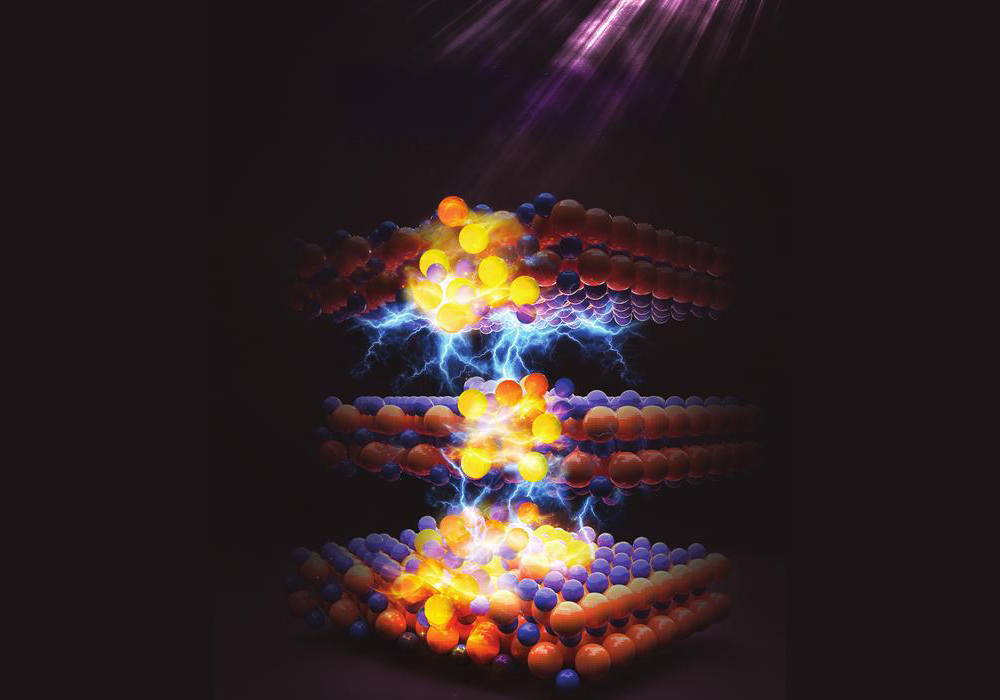Tape casting was used to fabricate a flexible indium tin oxide layer in an electroluminescent lamp.
Transparent conducting oxides constitute an important class of electronic materials and are used for applications such as flat panel displays, solar cells and touch panels. TCOs are doped semiconducting oxides and example compositions include tin-doped indium oxide, aluminum-doped zinc oxide and indium-doped cadmium oxide. The most-used commercial composition is tin-doped indium oxide, or indium tin oxide.
ITO films are usually synthesized by sputtering or physical vapor deposition. Such films have about 85 percent optical transparence in the visible range and low electrical resistivities. However, these are high-energy, vacuum-based technologies, which means they are expensive. In multilayers, the films are brittle.
The Andreas Roosen group at the University of Erlangen-Nuremberg (Germany) published a paper in the Journal of the American Ceramic Society (available now via Early View) that investigates a well-established forming technique—tape casting—to ITO fabrication. Tape casting is economical, scalable and is a proven way to fabricate other multilayer devices.
An electroluminescent lamp, which can also be thought of as a “luminescent capacitor,” is a multilayer device comprising a protective layer, transparent front electrode, luminescent layer, reflective dielectric layer, opaque rear electrode and a final protective layer. The corresponding materials stack is PET, ITO, ZnS:Cu, BaTiO3, Ag, PET. The light is generated in the luminescent zinc sulfide layer and emits from the device through the ITO layer.
The Roosen group made ITO slurries with varying ITO particle loads and amounts of binders, plasticizers, etc. Slurries were also prepared of the other functional layers (ZnS:Cu, BaTiO3 and silver). ITO tapes were cast using a fixed casting head with two doctor blades onto a silicon-coated PET carrier tape. Several thicknesses were made, and the green tapes were very flexible because of the binder and plasticizer contents. Binders were burned out at 650°C for two hours, but the tapes were not fired.
Electroluminescent lamps were fabricated by laminating the layers in the stack in a uniaxial hot press. The optical transmission of the device was 60-70 percent and was found to be dependent on the thickness of the ITO layer. The electrical conductivity of the devices was found to depend on the ratio of ITO to organic additives. The organics, though contributed to the flexibility of the tapes.
The authors conclude, “Bright electroluminescence of the lamps could be observed even under bending, thus proving the functionality and applicability of the ITO tapes manufactured in the unfired state.”
Not addressed in the paper is whether the process might be useful for other TCO materials. Between 2004 and 2006 the price per kilogram of indium increased from $700 to $900, but dropped to $600 by 2008. With the cost of indium being high and volatile, there are economic incentives to developing aluminum-doped zinc oxide into an acceptable alternative.
Full details are in the paper: “Tape Casting of ITO Green Tapes for Flexible Electroluminescent Lamps,” by Nadja Straue, Martin Rauscher, Martina Dressler and Andreas Roosen (doi:10.1111/j.1551-2916.2011.04836.x).
Author
Eileen De Guire
CTT Categories
- Electronics

